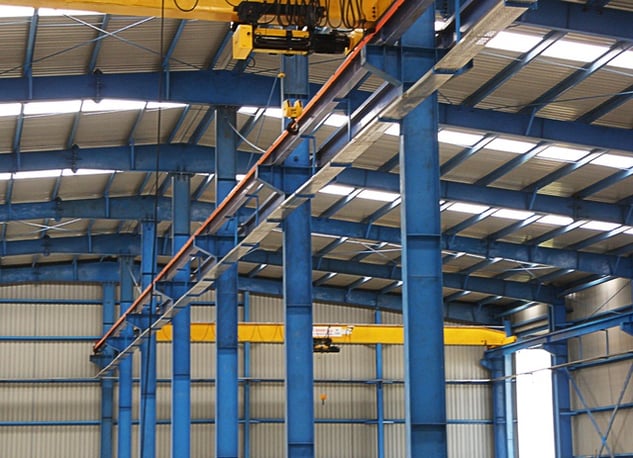 LED Lighting in an Industrial Facility
LED Lighting in an Industrial Facility
Due to the unique characteristics of LED lights, they are becoming popular for commercial and industrial applications. Despite its higher cost than conventional light sources, LEDs are more durable, reliable, and do not need any maintenance. The most advantageous factor is their long lifespan, which can last for as long as 50,000 - 100,000 hours. With properly designed fixtures, LEDs can operate well in all temperature environments and are much more energy-efficient than conventional light sources. Read on for more information on the 5 key benefits of LED lighting for industrial applications.
Return on Investment of LED Lighting for Industrial Applications
However, people seem to have some myths regarding the usage of LED lighting for industrial applications. Industries should be aware that LED lighting is a cost-effective replacement for fluorescents, HIDs, and all other types of industrial lighting. While initial purchase costs for LED lights are a little higher than fluorescents, the price difference is just a one-time issue. Moreover, they are energy-efficient, meaning industries that use LED lighting will have a lesser electricity bill.
Unlike past decades, when lighting-related energy costs played a relatively small role in purchase decisions, a decade of rapidly escalating energy prices has transformed energy use into the major cost driver for industrial lighting applications.
Commercial and industrial organizations should not trade-off for shorter initial payback periods—usually measured in months, they should look for long-term benefits, say for years. From a purely financial perspective, it makes sense to go for LED lights due to the long life and maintenance savings.
LED Lights Don’t Require Maintenance
It is a myth that LED lighting requires maintenance. People think that the magnetic ballasts of LEDs require servicing and replacement from time to time. However, LED lights have electronic drivers, which do not need replacement. Today, these drivers are designed to face any type of rugged environment. A magnetic ballast used in traditional industrial lighting like HID, HIF, HPS, and metal halide wears out fast, requiring servicing or replacement.
In large commercial and industrial facilities with hundreds of fluorescent or HID lights, servicing magnetic ballasts is quite expensive. But LEDs are semiconductors with electronic drivers, which play important role in managing the power delivery and makes the light energy efficient. Because LEDs use electronic drivers, they provide LED manufacturers with the opportunity to integrate control features like sensing, dimming, and instantaneous on/off into lighting fixtures for maximum functionality and efficiency.
Well-Designed LED Lighting Drivers Don’t Fail
Another key benefit of LED lighting for industrial applications is that well-designed LED drivers don’t fail during the usable lifetime of an LED. It is unlikely that a driver or any other component would need to be replaced. Furthermore, in a well-designed LED fixture, frequent on/off switching does not shorten its useful life, unlike traditional fluorescent or HID lighting fixtures, whose useful lifetimes are significantly reduced by such operations. In fact, frequent switching actually lengthens the useful life of an LED, as turning off an LED fixture slows the pace at which total operating hours accrue.
LED Lights Don’t Contain Mercury
People usually think that LED lights contain mercury, like fluorescent lighting does, but LED lights are mercury-free and are not harmful. They work well in high-temperature environments. In fact, well-designed LEDs work well in any type of environment. A well-designed lighting system that manages heat dissipation well is a prerequisite for lighting operating at any temperature—hot, cold, or anywhere in-between. LED lights also perform extraordinarily well in cold environments.
LED Lighting Can Manage Glare
A final benefit of LED lights for industrial applications is their ability to manage glare. A glaring lighting system is not suitable for many industrial facilities. Today, LED lights are designed well to manage glare. All high-output lights are bright. Once the newness wears off, the glare passes quickly. Moreover, well-designed optics on LED fixtures also minimizes direct brightness and glare. Additionally, LED lights now have a color temperature that is perfect for industrial environments. See how Electro-Matic Visual helped Great Lakes Composites save $50,000 a year with LED lighting.



